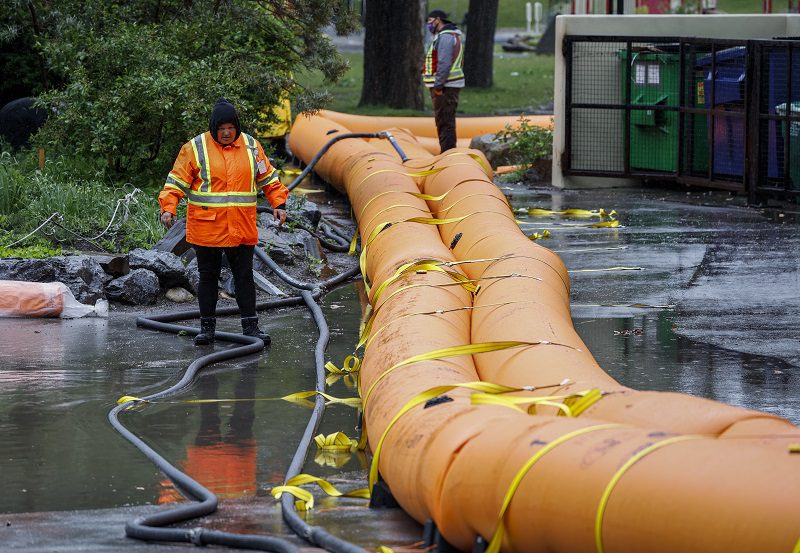Why recent Calgary storm is not like 2013 flooding

Although home to many of the costliest natural disasters in Canada, Alberta appears to have dodged a bullet with the latest rainfall event in the Calgary area.
The City of Calgary declared a local state of emergency earlier this week as a precautionary measure in anticipation of significant rainfall. Environment and Climate Change Canada had predicted between 75 to 125 mm of rain by Wednesday morning, with up to 150 mm or more possible in some areas.
In reality, the city said in an alert Wednesday it had received 70 mm to 80 mm of precipitation, and up to 100 mm in localized areas over the past 48 hours.
“From what I can see now, it won’t even be close to 2013, and I don’t think it will be considered a Cat,” Barry Haggis, president elect of the Insurance Brokers Association of Alberta, tells Canadian Underwriter. He was asked how significant the storm was, if he thinks it will be a Cat (at least $25 million in insured damage) and how it compares to the 2013 southern Alberta flooding that cost insurers $1.8 billion.
“For us, it wasn’t bad,” adds Haggis, who is also president of Young & Haggis Insurance Services Ltd. in Calgary. “I didn’t hear about any areas actually flooding like they did in 2013. The city did a great job with mitigation and preparations.
“We had a few wet basements but mainly from ground water, not traditional overland water,” Haggis adds. “We also had a few leaky roofs through skylights because of the constant rain, but overall, it wasn’t too bad.”
Haggis says most properties in Calgary have overland water coverage available to them, but certain areas are ineligible. “The majority of our clients who are eligible to purchase the overland water coverage do so with full policy limits where available,” Haggis reports. “Some companies are also including ground water in their overland water wordings which is a huge bonus for us as well.”
For Crawford & Company (Canada) Inc., the adjusting firm is seeing manageable volumes of claims from the event, says Calgary-based Walter Waugh, Crawford Canada’s vice president of loss adjusting for Western Canada.
“A combination of water and wind but no overland flooding of either the Bow or Elbow Rivers. That threat for now seems to be averted,” Waugh says.
Crawford’s call centre has been “busy but not overwhelmed,” Waugh adds. Crawford’s Contractor Connection, which finds contractors for insurance repairs, remodelling and renovation, is also reporting manageable volumes and decent contractor capacity as well.
“More adverse weather is in the forecast and the City of Calgary remains in a state of emergency but at this stage things are manageable from our perspective,” Waugh says.
Editor’s Note: This story continues to develop and more information will be added as it becomes available.
Feature image: Workers sandbag around the River Cafe restaurant as heavy rainfall forecast for southern Alberta is prompting the city of Calgary to declare a local state of emergency, in Calgary, Alta., Tuesday, June 14, 2022.THE CANADIAN PRESS/Jeff McIntosh



